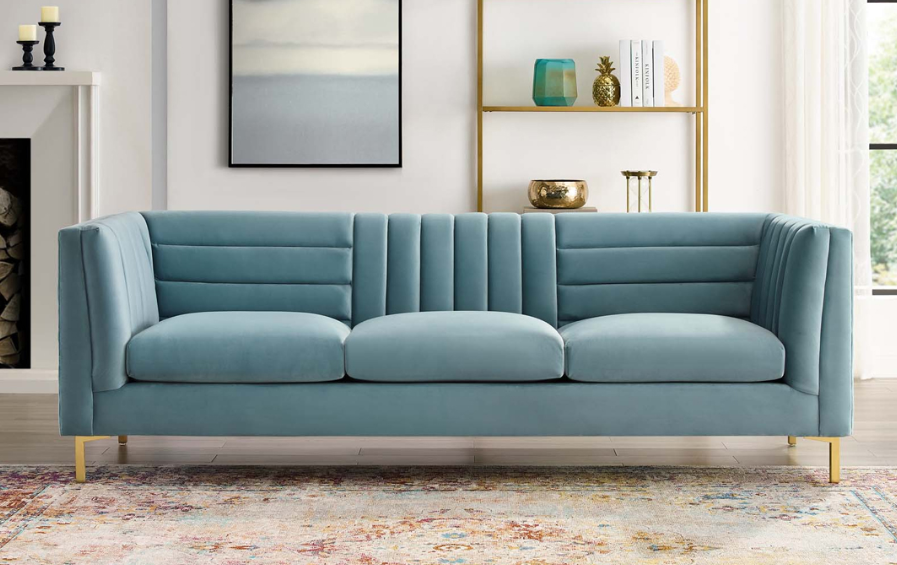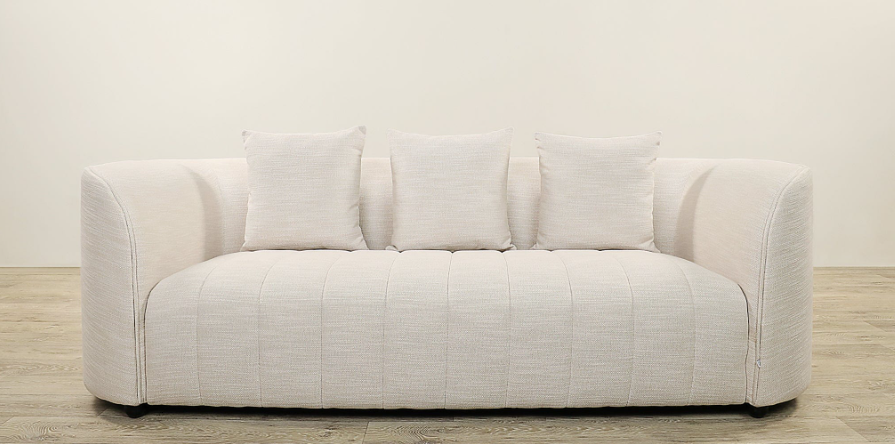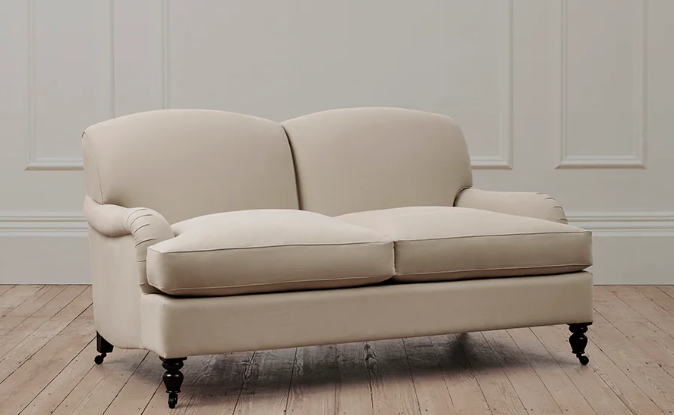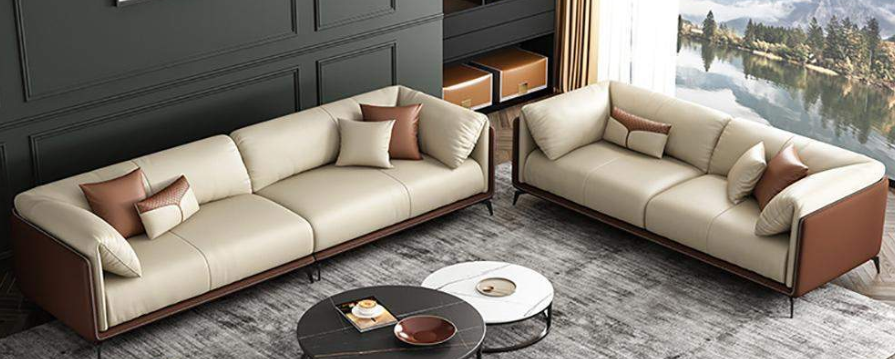Best Material For Sofa
When it comes to choosing the best material for a sofa, it ultimately depends on personal preference and lifestyle. However, some of the most popular and durable options include leather, velvet, and linen. Leather is known for its luxurious look and feel, as well as its durability and easy maintenance. Velvet is a soft and plush material that adds a touch of elegance to any room, but it may require more care to keep it looking its best. Linen is a lightweight and breathable fabric that is perfect for a casual and relaxed aesthetic, but it may be more prone to wrinkling and staining. Ultimately, the best material for a sofa is one that fits your style, budget, and maintenance preferences.
- Leather
- Velvet
- Linen
- Cotton
- Microfiber
Leather
Leather is a versatile and durable material that has been used for centuries in the production of clothing, accessories, and furniture. It is made from the skin of animals, typically cows, and undergoes a tanning process to make it soft, pliable, and resistant to decay. Leather is known for its luxurious feel and rich texture, making it a popular choice for high-end products such as handbags, shoes, and jackets. It is also valued for its durability and longevity, as well as its ability to develop a unique patina over time. Whether used in fashion or home decor, leather adds a touch of sophistication and elegance to any item it adorns.
Pros
- Durable and long-lasting
- Classic and timeless aesthetic
- High quality material
- Soft and comfortable to wear
Cons
- Leather production contributes to deforestation and greenhouse gas emissions.
- Leather products can be expensive and may not be cruelty-free.

Velvet
Velvet is a luxurious and elegant fabric that has been prized for centuries for its softness and rich texture. It is made from a variety of fibers, including silk, cotton, and synthetic materials, and is characterized by its dense pile, which gives it a plush and velvety feel. Velvet is often used in high-end fashion and home decor, adding a touch of sophistication and glamour to any setting. Its smooth and lustrous surface reflects light beautifully, making it a popular choice for formal attire and upholstery. Velvet has a timeless appeal that never goes out of style, making it a classic and versatile fabric for a variety of applications.
Pros
- Luxurious and elegant appearance
- Provides warmth and insulation
- Easy to clean and maintain
- Great for adding texture and depth to an outfit
Cons
- Velvet can be difficult to clean and maintain, as it is prone to attracting dust and dirt.
- Velvet can be expensive compared to other fabrics, making it less budget-friendly for some consumers.

Linen
Linen is a versatile and durable fabric that has been used for centuries for clothing, bedding, and household items. Made from the fibers of the flax plant, linen is known for its natural luster and breathability, making it a popular choice for warm weather clothing. It is also highly absorbent and quick-drying, making it ideal for towels and bedding. Linen is a sustainable and eco-friendly material, as flax plants require minimal water and pesticides to grow. With proper care, linen can last for many years, becoming softer and more comfortable with each wash. Its timeless elegance and practicality make linen a beloved choice for many people seeking high-quality, natural textiles.
Pros
- Naturally breathable and moisture-wicking
- Environmentally friendly and biodegradable
- Resistant to bacteria and allergens
- Gets softer and more comfortable with each wash
Cons
- Linen wrinkles easily and requires ironing to maintain a crisp appearance.
- Linen can shrink when washed or dried improperly, leading to potential fit issues.

Cotton
Cotton is a soft, fluffy fiber that grows in a protective case, or boll, around the seeds of the cotton plant. It is one of the most widely used natural fibers in the world, with a long history dating back thousands of years. Cotton is known for its breathability, durability, and versatility, making it a popular choice for clothing, bedding, and other textiles. It is also a renewable resource, as the cotton plant can be harvested and regrown each year. Cotton production plays a significant role in many economies around the world, particularly in countries like India, China, and the United States. However, concerns have been raised about the environmental impact of cotton farming, particularly in terms of water usage and pesticide use. Overall, cotton remains a staple in the textile industry and continues to be a beloved material for a wide range of products.
Pros
- Versatile and adaptable to various styles and designs
- Affordable and accessible to a wide range of consumers
- Hypoallergenic and gentle on sensitive skin
- Renewable and sustainable resource
Cons
- Cotton requires a lot of water to grow, which can contribute to water scarcity in certain regions.
- Cotton production often involves the use of pesticides and chemicals, which can harm the environment and human health.

Microfiber
Microfiber is a synthetic material made from finely woven fibers that are thinner than a human hair. It is known for its softness, durability, and ability to absorb moisture quickly. Microfiber is commonly used in cleaning cloths, towels, and clothing because of its ability to trap dirt and dust particles effectively. It is also a popular choice for upholstery and bedding due to its stain-resistant properties. Additionally, microfiber is environmentally friendly as it requires less water and energy to produce compared to traditional fabrics. Overall, microfiber is a versatile material that offers a wide range of benefits for various applications.
Pros
- Stain-resistant and easy to clean
- Ultra-absorbent and quick-drying
- Hypoallergenic and gentle on sensitive skin
- Lightweight and breathable for all-day comfort
Cons
- Microfiber can be difficult to clean and maintain, as it tends to trap dirt and oils within its fibers.
- Microfiber may not be as durable as other materials, leading to potential wear and tear over time.

FAQs
What are the different types of fabrics commonly used in upholstery, such as leather, velvet, linen, cotton, and microfiber, and what are the benefits and drawbacks of each?
- Leather: Benefits include durability, easy to clean, and luxurious look. Drawbacks include high cost and can be prone to scratches and fading.
- Velvet: Benefits include softness, luxurious appearance, and good for formal spaces. Drawbacks include being difficult to clean and can show wear over time.
- Linen: Benefits include being breathable, natural, and eco-friendly. Drawbacks include being prone to wrinkling and staining.
- Cotton: Benefits include being soft, durable, and easy to clean. Drawbacks include being prone to shrinking and wrinkling.
- Microfiber: Benefits include being stain-resistant, durable, and affordable. Drawbacks include being prone to pilling and can be difficult to clean certain stains.
What are the benefits of using leather as a material for clothing and accessories?
- Durability: Leather is a strong and long-lasting material, making it ideal for clothing and accessories that need to withstand wear and tear.
- Timeless style: Leather has a classic and stylish look that never goes out of fashion.
- Comfort: Leather is a breathable material that molds to the body, providing a comfortable fit.
- Protection: Leather provides protection from the elements, such as wind, rain, and cold weather.
- Sustainability: Leather is a natural material that can be biodegradable and eco-friendly when sourced responsibly.
What are the environmental impacts of cotton production and how can they be mitigated?
- Water usage: Cotton production requires a significant amount of water, leading to water scarcity in some regions. This can be mitigated by implementing more efficient irrigation techniques and using rainwater harvesting systems.
- Pesticide use: Cotton crops are often treated with pesticides and insecticides, which can harm local ecosystems and wildlife. To reduce this impact, farmers can switch to organic farming practices and use natural pest control methods.
- Soil degradation: Intensive cotton farming can deplete soil nutrients and lead to erosion. Crop rotation, cover cropping, and reduced tillage can help maintain soil health and fertility.
- Greenhouse gas emissions: Cotton production contributes to greenhouse gas emissions through the use of synthetic fertilizers and machinery. Transitioning to organic farming methods and using renewable energy sources can help reduce emissions.
What are the different types of velvet fabric and how are they used in various industries?
- Crushed velvet: Often used in the fashion industry for clothing and accessories
- Panne velvet: Commonly used in upholstery for furniture
- Velveteen: Used in the production of children’s clothing and toys
- Silk velvet: Typically used in high-end fashion and home decor
What are the benefits of using linen fabric in clothing and home textiles?
- Linen fabric is highly breathable and moisture-wicking, making it ideal for warm weather clothing.
- It is a durable fabric that becomes softer and more comfortable with each wash.
- Linen has natural antibacterial properties, making it a great choice for those with sensitive skin.
- It is a sustainable and eco-friendly fabric, as it is made from the flax plant which requires minimal water and pesticides to grow.
- Linen is a versatile fabric that can be used for a variety of clothing and home textile items, such as bedding, curtains, and tablecloths.
What are the benefits of using microfiber cleaning cloths compared to traditional cotton cloths?
- Microfiber cleaning cloths are more absorbent than traditional cotton cloths.
- They are more effective at trapping dirt and dust particles.
- Microfiber cloths are lint-free, making them ideal for cleaning glass and other smooth surfaces.
- They are reusable and can be washed and used multiple times.
- Microfiber cloths are more durable and long-lasting compared to cotton cloths.






